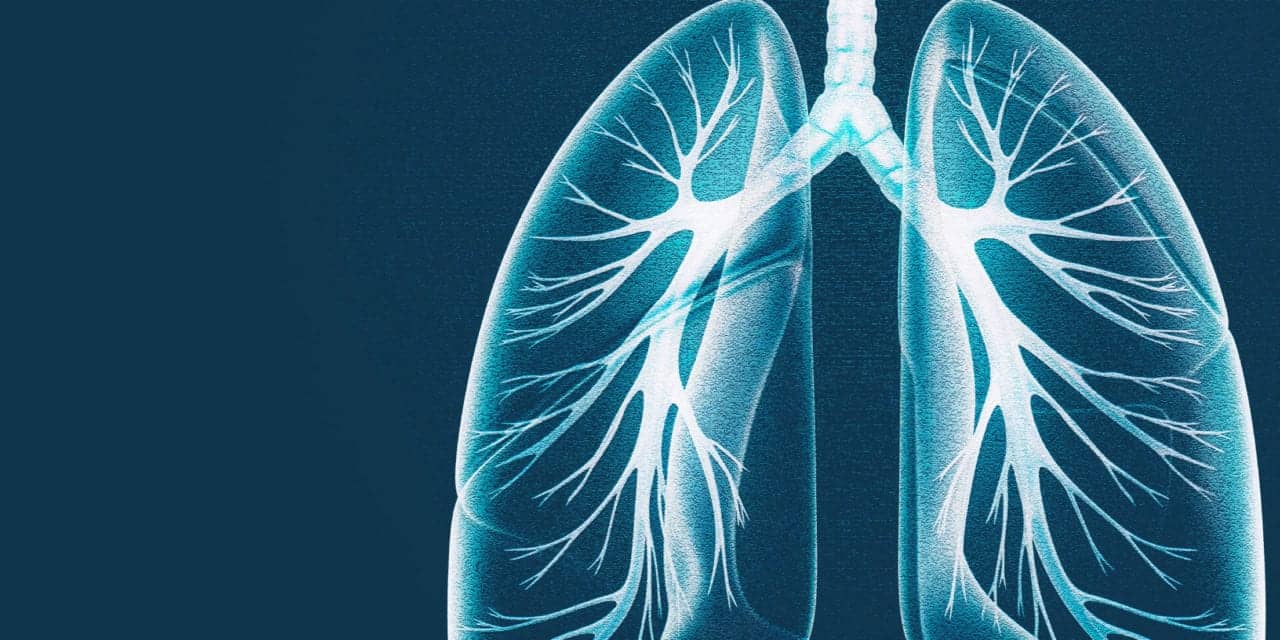Industry leaders share their ideas and opinions on the state of respiratory care today.
The field of respiratory therapy is continually evolving—in its legal and financial boundaries, the nature of its tools and services, the identity of its practitioners, and the methods and motives of their craft. RT asked clinical, education, and legislative leadership around the country to share their thoughts on the practice and where it might be going.
Participants in the roundtable are:
- Pamela L. Bortner, MBA, RRT, president, National Board for Respiratory Care (NBRC);
- Rick Carter, PhD, MBA, professor and chair, Department of Public Health, Georgia Southern University, Statesboro;
- Former United States Representative Jim Maloney of Connecticut;
- Phillip Porte, executive director, NAMDRC;
- Tom Smalling, MS, RRT, RPFT, RPSGT, clinical assistant professor, Respiratory Care Program, State University of New York at Stony Brook, and president, New York State Society for Respiratory Care; and
- John Wright, clinical specialist, University of California-Los Angeles Respiratory Therapy Department.
RT: Should the CRT credential be eliminated? Why or why not? What are the ramifications of doing so?
Pam Bortner: No, the CRT credential should not be eliminated. The entry-level CRT examination is the basis for licensure in 45 states and the District of Columbia. It is the examination that demonstrates competency at beginning practice, which is a requirement of state licensure. Eliminating the CRT credential would also eliminate half of the population of practicing respiratory therapists. This is a significant problem, considering that there is already a shortage of respiratory therapists. Further, currently 29% of graduates of advanced respiratory therapy programs cannot pass the entry level examination, so if you raise the bar for entry to the RRT, this population also would be eliminated from practice.
Jim Maloney: No. Respiratory therapy is an important allied-health profession. The CRT credential appropriately helps establish and maintain high professional standards, marks entrance into the profession, assists in assuring that RTs are fairly compensated for their important work, and provides RTs with the professional standing and credibility needed to effectively interface with other health professionals and to properly assist their patients.
Rick Carter: Credentialing in all aspects of medicine is open to many different opinions and controversies. The goal of the profession should be to continually examine the product being produced and match the product to the needs of society today and years into the future. If training programs do not provide the level of expertise required, then the credentialing process should demand enhancement of the programs. Credentialing simply defines the minimal requirements/proficiencies for a process and eventual license to practice respiratory care. If the goal of respiratory therapy is to provide caregivers who can function independently, make sound clinical judgments, and become treatment team leaders in all aspects of pulmonary medicine, then CRT credentialing should be revamped.
Tom Smalling: I am all for a single credentialing system. The fact is that there is no scope of practice differences in our practice act in New York. In fact, our state education department recently confronted our licensing board with this issue. I also think that the small pay differences and few differences between job descriptions add to the problem [of the current two-tiered system].
John Wright: The underlying question is: Should the profession continue to maintain a two-tier system (ie, RRTs and CRTs)? The answer is heavily influenced by two factors: clinical competency and staffing. The two credentials cannot be used interchangeably in all RT work settings. In settings where a higher level of competency is required (eg, a tertiary care teaching hospital), the skills, knowledge, and ability of an RRT can be put to good use. However, in other settings, such as a rural community hospital and home care, a CRT can provide excellent care and is most likely in very high demand. Elimination of the CRT examination would have a devastating effect in this latter setting, forcing facilities to look to others for providing respiratory care.
RT: Why are RTs not reimbursed for professional home care services? Should they be?
JM: RTs most certainly should be reimbursed for professional home care services. That they currently are not is rooted in the now out-of-date health care model that was extant at the implementation of the Medicare/Medicaid programs. At that time it was assumed that health care was most efficaciously delivered in an institutional setting. We now know better: home care is generally to be preferred clinically and is almost always less expensive. The old model has not yet been abandoned for three reasons: the usual programmatic inertia reflected in the common reluctance to embrace change; institutional concerns about possible losses of revenue; and unfounded concerns about the cost and/or oversight of home care delivery, which typically mask the first two reasons. Each of these points of resistance will be overcome, however, as real cost pressures continue to mount on the health care system. And we can expedite that transition by continued education and advocacy.
RC: There is an historical backdrop to reimbursement in the United States. Many primary care providers who provide acute and chronic care services do not receive direct reimbursement incentives. Rather, billing is performed as a business function to evaluate costs and estimate future needs. Reimbursement to the hospital or care facility is allocated to the patient room and care charge. This practice has not changed appreciably for many decades. However, with a move to managed care and extended outpatient services, there should be opportunities for respiratory care practitioners to extend their reach in the service sector and at the same time implement a reimbursement process.
JW: RTs are not reimbursed for professional home services because our visibility as a profession is far less than we deserve. As a result, our political presence is not as strong as it should be. Who is likely to write to their state legislator or congressman about supporting a profession they’ve never heard of? Until we have a character cast in the role of “respiratory therapist” on a prime-time TV show, we will be trying to dig ourselves out of an already very deep PR hole. Once our profession gets the recognition it deserves, reimbursement will improve.
TS: I think it is a matter of documenting the need and benefits of therapists in the home (the easy part) and getting the policymakers to buy into the proposal (the very hard part). I think it will happen.
Philip Porte: The primary reason RT services are not covered in the home is that there simply is no such provision in the Medicare statute that authorizes the Centers for Medicare & Medicaid Services (CMS) to provide such coverage and payment. Unfortunately, the situation is seriously exacerbated by the fact that many home care providers, to remain competitive in the marketplace and do what is right “clinically,” do in fact provide a certain level of RT-related professional services. This is a value-added approach and understandable, but this fact is not lost upon Congress or CMS. Both recognize that many providers do provide some level of RT coverage for home care even though Medicare does not pay for it. Asking the rhetorical question is valid: “Why should Congress authorize payment for services that already are being provided gratis?” The issue also includes the complex matter of a regulatory framework. There are “hospital” conditions of participation, “SNF [skilled nursing facility]” conditions of participation, “home health agency” conditions of participation, and so forth, at least in theory ensuring that those who provide hands-on care to Medicare beneficiaries follow a certain set of rules. There are no such rules on the durable medical equipment side, ensuring that the providers of oxygen equipment, ventilators, nebulizers, and other equipment have “qualified personnel” providing hands-on care to Medicare beneficiaries. CMS is not eager to assume responsibility for a new regulatory structure, nor is Congress eager to impose one. RT services associated with the provision of oxygen, ventilators, nebulizers, and other such equipment should be covered services. While there are regulatory complexities in achieving that goal if Congress were to authorize such payment, there is little question that the services, when provided within the traditional “reasonable and necessary” statutory framework of Medicare, would be of significant clinical value to many beneficiaries with pulmonary-related disease.
RT: How do you feel about the services you receive from vendors after purchasing their products? Are there services you wish could be provided? What enhancements would you like to see?
RC: Technology is driving medicine to new frontiers. Unfortunately, not all vendors allocate ample resources to quality training for the equipment they provide, nor do they work aggressively to rectify issues that may arise. In many cases, with the technology available, it is almost impossible to trouble-shoot equipment, and this is an area of ongoing concern. When faced with an issue, many vendors cannot or will not share [information on] glitches in software until they are pressed by the consumer. Yet, opportunities exist to provide better educational opportunities through programmed instruction, as PowerPoint presentations provided online or through CDs. Vendors should provide tools modeled after “Video Professor” for each instrument they provide, along with a trouble-shooting sequence illustrating how to resolve issues. Additionally, while some vendors are very responsive to client needs, some are not. There should be a sounding board for clients to express positive and less-than-positive feedback, so that all future consumers can evaluate the company more thoroughly prior to making a purchase. This is especially important in the present environment, where mergers and acquisitions occur daily and some parts of existing companies are spun off—and should be—because profit margins are not high enough or the product is not aligned with the core business. Further, within corporate structures, direct access should always be maintained so that concerns can be addressed quickly and efficiently. As consumers, we should write bid specs tight enough so that we receive exactly what we require with initial delivery. This will force vendors to redirect their business practice.
TS: I would like to see more involvement [by vendors] with industry and formal education. Our school recently received a large educational grant that has allowed us to build a teaching laboratory. I would like to see more instances of this.
JW: Our vendors are very professional and go out of their way to help us. They take care of problems and are aware of our cost constraints. Regarding services provided, it would be helpful if vendors could provide more in-services. Currently, if we ask for an in-service, the vendors are willing to help. However, it is getting more difficult for departments to provide education for staff. Therefore, any additional in-services provided by vendors is greatly appreciated, especially if CEUs are offered. Regarding enhancements, it is becoming increasingly difficult, expensive, and time-consuming to keep up with the latest technology. We often have to sift through many similar products that vary little clinically and have an insignificant difference in price. An on-line comparative shopping system would be fantastic!
RT: If you could make one improvement in the way respiratory care is practiced in 2003 what would it be?
JM: Without adequate funding and authority for home care delivery, respiratory therapy will never achieve its full potential for the great contributions it can make to our health care system.
PB: The implementation of therapist-driven protocol programs. This advances the professionalism of respiratory therapists and supports their role as disease state managers.
JW: I would increase our visibility as a profession as I stated earlier speaking of home reimbursement.
TS: It would be the move to a single credentialing system.
RT: With what feature in respiratory care today are you most pleased?
JM: One of the most important trends in modern medical services is the development of clinical procedures and treatment modalities that are less physically invasive. Respiratory therapy has been an important part of that progress and continues to hold great promise for the future. Indeed, as respiratory therapy applications expand, I anticipate that they will become an even more critical part of modern health care.
TS: The move to entry-level associates and the fact that almost all 50 states have licensure. I think that the multidisciplinary nature of the field (ie, sleep, home care, cardiac, pediatrics) is the most attractive component of being in this profession.
JW: I am most pleased with those RTs who are committed to patient care, our departments, and our profession. I often think of these RTs as nomads. They are free thinkers; they are critical thinkers. They do not belong to a specific patient unit; they migrate to where they are needed most, and these individuals usually are the only RTs present in their work areas, single-handedly supporting our policies, our profession, and optimal patient care.










